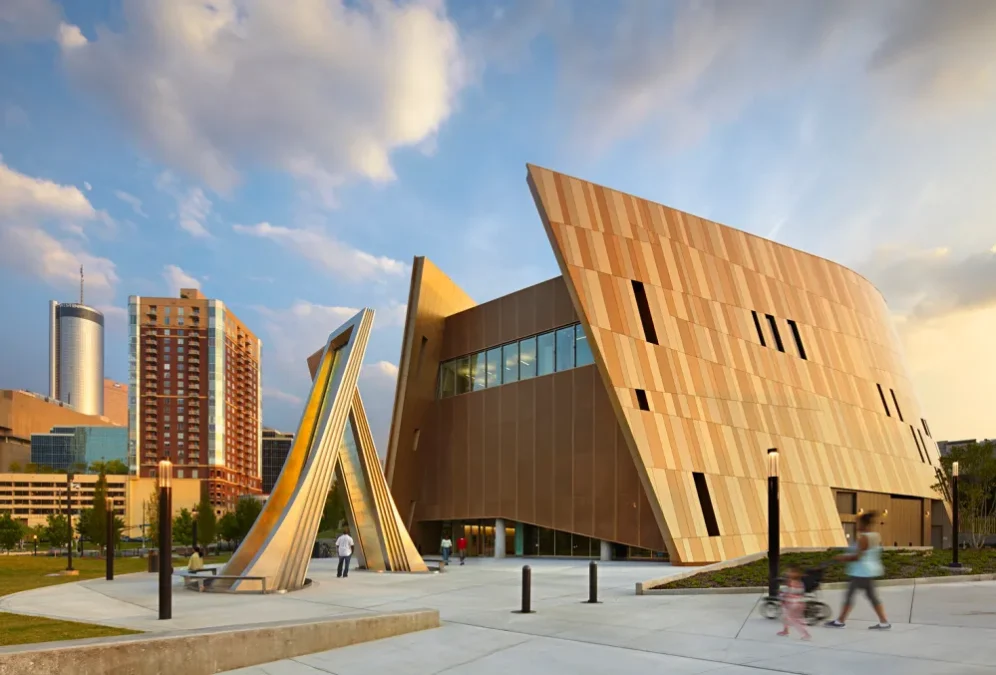The Evolution of Architecture Atlanta: A City of Design and Innovation?

Atlanta, a city known for its rich history, vibrant culture, and dynamic growth, is also home to an eclectic array of architectural styles that reflect its past, present, and future. The evolution of architecture Atlanta is a fascinating journey, from its antebellum roots to its role as a modern metropolis shaping the Southeast skyline. Whether it’s the stately homes of Buckhead, the modern skyscrapers downtown, or the adaptive reuse of historic buildings, architecture Atlanta tells the story of a city constantly reinventing itself.
The Historical Roots of Architecture Atlanta
Atlanta’s architectural landscape was shaped by its growth as a transportation hub in the 19th century. Following its founding in 1837, the city quickly became a vital railroad center, attracting businesses, industry, and people. The early buildings of Atlanta were typical of the era, with simple, functional designs crafted from wood and brick. These structures reflected the practical needs of a growing community, but they also held significant cultural and economic importance.
One of Atlanta’s most iconic historical examples of architecture is the Georgia State Capitol, built in 1889. Designed by architect Willoughby J. Edbrooke, the Capitol features a Neoclassical style with a prominent gold dome that shines above downtown. This structure embodies the city’s ambition to project power and stability while recovering from the devastation of the Civil War.
The Influence of the 20th Century: A Shift to Modernism
The turn of the 20th century brought new ideas and technological advancements, and architecture Atlanta began to reflect these changes. As the city expanded, architects embraced new materials and design principles, including steel, glass, and reinforced concrete. Using these materials allowed for taller, more expansive buildings and the skyscraper’s rise.
One of the most important developments in this era was the construction of the Peachtree Plaza Hotel in 1967. Designed by architect John Portman, the hotel is a landmark of modernist architecture and one of Atlanta’s tallest buildings. Portman’s design pushed the boundaries of architecture at the time, featuring a circular atrium and open spaces that broke away from traditional hotel designs. The Peachtree Plaza remains a quintessential symbol of architecture Atlanta, demonstrating the city’s embrace of innovation and bold new ideas.
Modern Architecture and Skyscrapers: Shaping the Skyline
The 21st century has seen an explosion of modern architecture Atlanta, with several iconic skyscrapers dominating the skyline. The city’s growing economy, an influx of businesses, and continued development have resulted in construction of some of the region’s most advanced and visually striking buildings.
One of the most notable examples is the Bank of America Plaza, completed in 1992. Standing at 1,023 feet, this 55-story skyscraper is the tallest building in Georgia and the tallest building in the Southeastern United States. Designed by Kevin Roche John Dinkeloo and Associates, the tower’s sleek design combines modern materials with a bold form that makes it instantly recognizable in the city’s skyline.
Another standout in architecture Atlanta is the Mercedes-Benz Stadium, which opened in 2017. Designed by the architectural firm HOK, this stadium is a marvel of engineering and design. Its retractable roof, which opens like a camera aperture, is one of the most innovative features of the stadium. The structure blends cutting-edge technology with aesthetic appeal, making it a key landmark in Atlanta’s architectural identity.
Adaptive Reuse and Sustainable Design
As the city has grown and modernized, there has also been a significant shift towards preserving and repurposing historic buildings. Adaptive reuse, where old structures are converted into new spaces, has become increasingly popular in Atlanta’s architectural landscape. This approach not only preserves the city’s rich architectural heritage but also offers sustainable solutions to urban development.
One example of this is the Ponce City Market, which was originally the Sears, Roebuck & Co. warehouse. The building was constructed in 1929 and sat vacant for decades before being redeveloped into a mixed-use space that includes offices, restaurants, retail stores, and apartments. The design of Ponce City Market preserves many of the building’s original features, such as its exposed brick and large windows, while integrating modern elements like rooftop gardens and green spaces. This combination of old and new is a hallmark of Atlanta’s modern evolution of architecture.
The Future of Architecture Atlanta
Looking ahead, architecture Atlanta is poised to continue evolving and is driven by technological innovations, sustainability, and design innovations. As the city’s population grows and the demand for housing, office space, and commercial developments increases, architects will be challenged to find creative solutions that balance growth with environmental responsibility.
One of the key trends shaping the future of architecture Atlanta is the focus on sustainability. With increased awareness of climate change and the importance of reducing carbon footprints, many new buildings in the city are incorporating green design elements, such as energy-efficient systems, solar panels, and rainwater harvesting. For instance, the Green Building Council of Georgia has recognized several projects in Atlanta that demonstrate sustainable practices, helping to establish the city as a leader in eco-friendly architecture.
Additionally, the rise of smart technology is changing how buildings are designed and constructed. Integrating technology into the built environment, from automated climate control systems to advanced lighting and security features, creates smarter, more efficient spaces. As the city continues to embrace innovation, these smart technologies will play an increasingly important role in shaping the future of architecture Atlanta.
Conclusion
The story of architecture Atlanta is one of constant reinvention, blending the old with the new in an ever-evolving city. Atlanta’s architectural landscape reflects its dynamic growth and transformation from the historic Georgia State Capitol to the futuristic Mercedes-Benz Stadium. As the city continues to grow, architects will undoubtedly find new ways to innovate and push the boundaries of design, creating spaces that reflect the needs and values of the modern world.
Whether through preserving historic buildings, incorporating sustainable design, or exploring new technologies, the architecture of Atlanta will continue to be a testament to the city’s creativity, ambition, and resilience.



